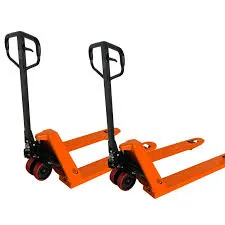


Understanding Chain Blocks and Lever Hoists Essential Tools for Lifting
In various industries, lifting heavy loads efficiently and safely is crucial. Two widely used manual lifting devices that facilitate this process are chain blocks and lever hoists. Both tools, while similar in function, offer unique advantages and are suitable for different applications. Understanding the features and benefits of each can greatly enhance operational efficiency in construction, manufacturing, and warehousing.
Chain Blocks Design and Functionality
Chain blocks, also known as chain hoists, are devices that use a chain to lift heavy loads vertically. The core component of a chain block is its pulley system, which is typically made of robust steel to withstand significant weight. The lifting mechanism involves a user pulling a hand chain, which in turn rotates the drum inside the block, winding the lifting chain and raising the load attached at the bottom.
One of the most notable features of chain blocks is their ability to lift heavy weights with relative ease. They are available in various weight capacities, often ranging from 0.5 tons to several tons, making them versatile tools for many applications. Additionally, chain blocks are designed for permanent installation or temporary use, depending on the lift requirements of the job site. They are particularly efficient for use in warehouses, workshops, and construction sites where vertical lifting is a common task.
Lever Hoists Versatility and Portability

On the other hand, lever hoists, also known as lever blocks or ratchet hoists, offer a different lifting mechanism. As the name implies, lever hoists operate by using a lever arm. Users move the lever up and down, which engages the ratchet mechanism to lift or lower a load. This design not only allows for vertical lifting but also horizontal pulling, making lever hoists particularly versatile.
One of the significant advantages of lever hoists is their portability. They are typically compact and lightweight, making them easier to transport compared to chain blocks. Additionally, lever hoists can be used in tighter spaces where a chain block's overhead clearance might be an issue. They are often used in situations where precise control over the load is necessary, such as in rigging, construction, or even in automotive applications.
Safety Considerations
When using either chain blocks or lever hoists, safety should always be a primary concern. Both tools should be regularly inspected to ensure that all components, particularly chains and hooks, are in good condition and capable of handling the specified loads. Proper training on how to use these tools safely is crucial to prevent accidents. Users should also be aware of their weight limits and follow manufacturer guidelines to ensure proper use.
Conclusion
In summary, both chain blocks and lever hoists play essential roles in the lifting and moving of heavy loads across various industries. While chain blocks are best suited for vertical lifts and larger loads, lever hoists offer versatility and portability for a range of applications. Choosing between the two depends on the specific lifting needs, weight requirements, and space constraints of the task at hand. By understanding the strengths of each tool and adhering to safety practices, professionals can enhance their productivity and ensure a safer working environment.



